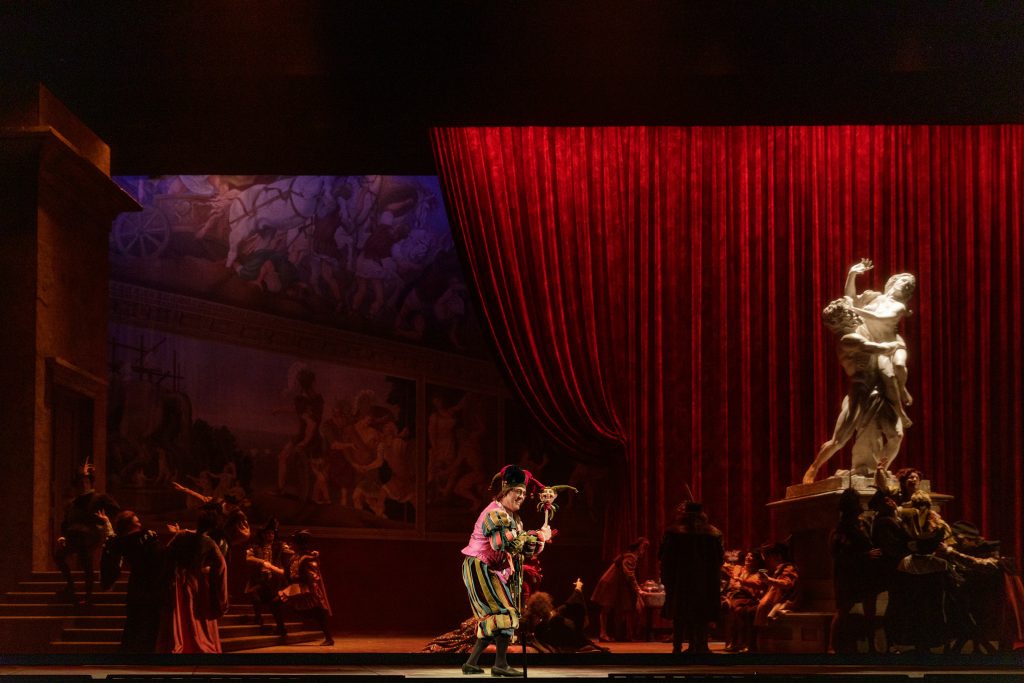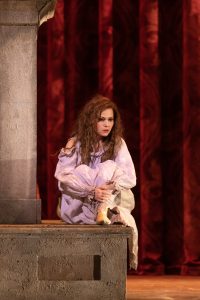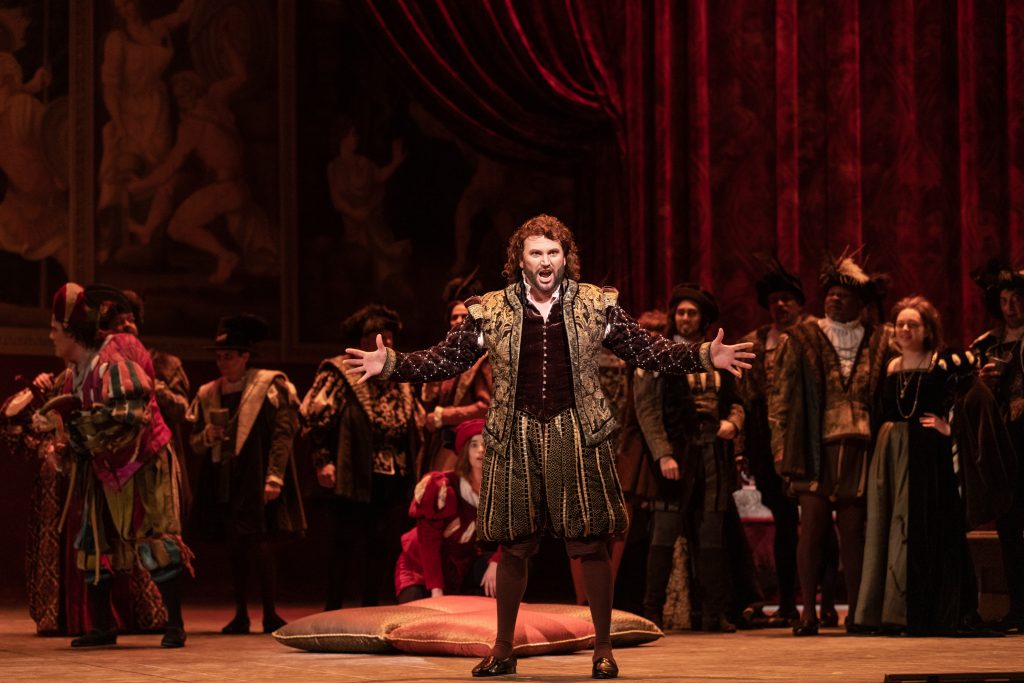San Diego Opera’s Thrilling ‘Rigoletto’
Giuseppe Verdi’s licentious Duke of Mantua in his opera Rigoletto does not have to worry about paying hush money to cover up his sexual escapades. His entire court not only knows about them, but they relish his unchecked indulgence—none more than the opera’s title character, the court jester Rigoletto.

Stephen Powell [photo(c.) Karli Cadel]
Several voices new to the San Diego Opera stage brightened this traditional production, especially Alisa

Alisa Jordheim [photo (c.) Karli Cadel]

Scott Quinn [photo (c.) Karli Cadel]
Bass-baritone Scott Sikon, another company regular, brought his vocal heft and a welcome dignity to Count Monterone, the member of the Duke’s court who Rigoletto mocks, eliciting the curse the Count pronounces on both the jester and the dissolute Duke. In an early version of this opera, Verdi chose the title La maledizione (The Curse), but changed his mind along the way to use the name of his protagonist.
As Giovanna, Gilda’s duenna, mezzo-soprano Sarah-Nicole Carter fulfilled her duties congenially, as did contralto Alissa Anderson as Maddalena, Sparafucile’s sister, in whom the Duke has expressed a particular interest.
This Rigoletto offered an array of compelling duets, but the third act quartet of Quinn, Anderson, Powell and Jordheim revealed the opera’s emotional crisis in robust, elevated vocal prowess. Only the magical storm scene that followed—a combination of Verdi’s clever orchestration and Anne-Catherine Simard-Deraspe’s inventive lighting design—could have eclipsed the quartet’s striking emotional impact.
Steven White coaxed a rousing but cleanly defined account of Verdi’s rich score from the San Diego Symphony in the pit, and the men of Chorus Master Bruce Stasyna’s chorus provided full-bodied might for the Duke’s court, a crucial factor in the drama.
As mentioned earlier, Michael Cavanaugh’s direction proved admirable in its insistent pacing of the drama. I felt he efficiently solved the problem of staging the difficult act one scene where the men of the court trick the blindfolded Rigoletto into holding a ladder to a neighbor’s house—thinking he is helping a shady abduction—while they actually abduct his own daughter from her chambers. And I thought his placement of the disguised Duke on the stairway just above Gilda and Giovanna as they sing their duet on the patio below added to the suspense of Gilda’s unexpected encounter with the Duke. Robert Dahlstrom’s set designs proved adequate, although the huge erotic sculpture that dominated the grand hall of the ducal palace was a masterstroke.
This performance of Verdi’s “Rigoletto” was presented by San Diego Opera on Saturday, February 2, 2019, in the San Diego Civic Theatre. The opera will be repeated in the same venue on February, 5, 8, and 10.


